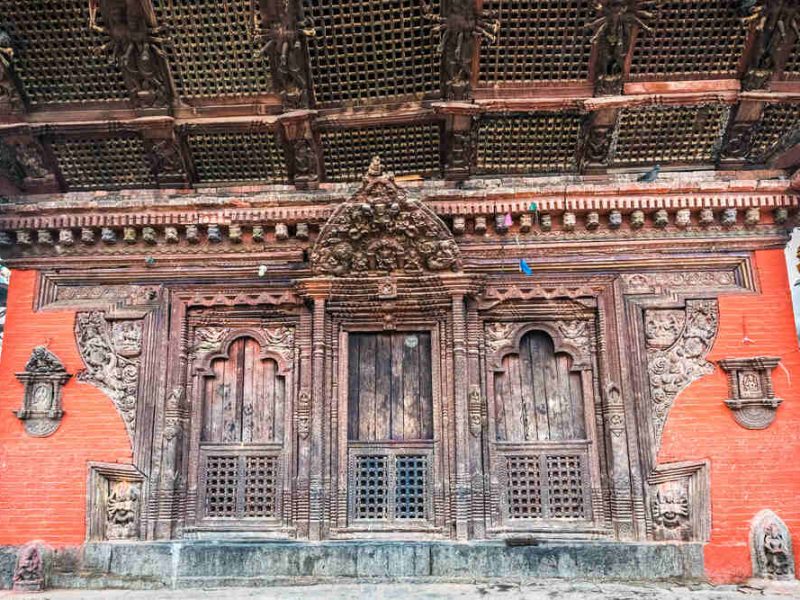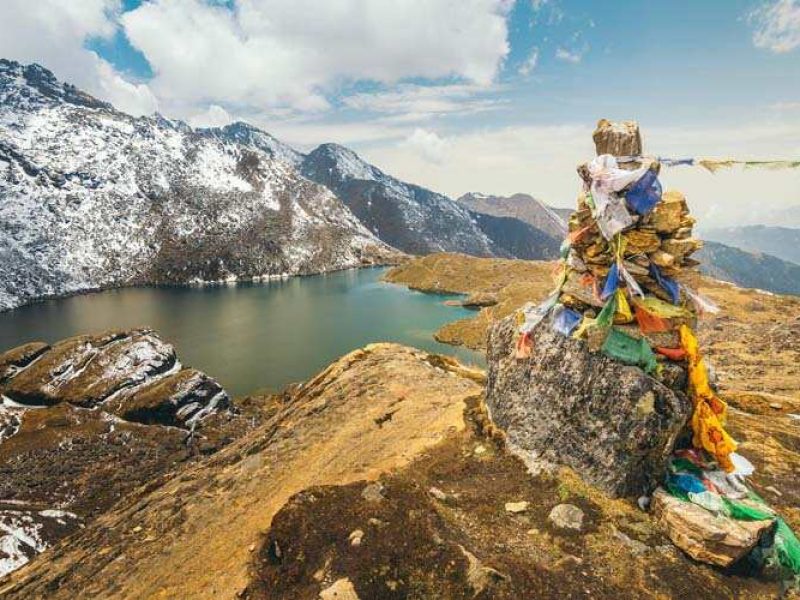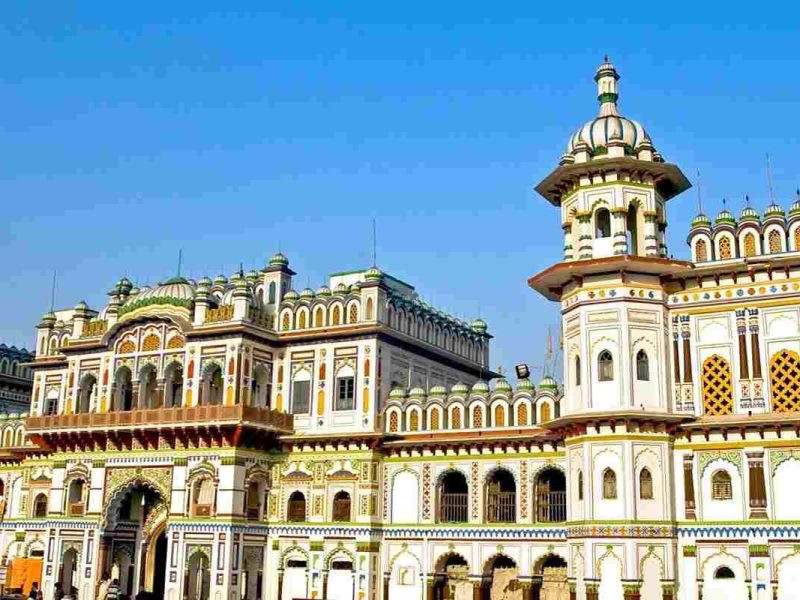The country Nepal which is located in the Himalayas. It has seen an increase in tourist arrivals. Indians being the largest number of groups. Its natural landscapes and cultural treasures, including Kathmandu’s ancient temples and monasteries are considered as the country’s charm.
Spiritual seekers can find solace in sacred sites like Lumbini and Pashupatinath while the adventurers can explore the rough paths of the Himalayas . Nepal’s rich heritage is reflected by cultural diversity, including vibrant festivals and warm hospitality. As Its charm grows stronger alongside Nepal continues to attract travelers
Nepal is considered as a popular destination for adventure, spirituality and cultural immersion. Nepal has seen an increase in tourist arrivals, exceeding the one million mark. The largest group are the Indians who showcase the country’s cultural traditions and natural beauty. This growth highlights the country’s rich traditions and the connections between Nepal and India.
Discovering Nepal’s Cultural Treasures
Nepal’s breathtaking geography is as diverse as its cultural landscape. Nepal has plenty of treasures to discover, from its lively festivals to its ancient architectural wonders.
Festivals And Celebration In Nepal
A variety of festivals and celebrations are the features of Nepal’s cultural heritage which includes Dashain which symbolizes good over evil and Tihar which is the festival of lights.
These celebrations serve as reminders of Nepal’s rich cultural heritage and are deeply rooted in tradition and symbolism. These events let people remember their traditions, enjoy what they have in common, and become closer to their families and communities. This shows that Nepal has a strong and lively culture.
Nepal’s festivals and celebrations are a reflection of its rich cultural heritage, reflecting its religious, ethnic, and linguistic diversity. Main festivals include Dashain, which celebrates the triumph of good over evil, Tihar which honors life aspects, Teej which is a women’s festival for husbands’ well-being, Holi and Buddha Jayanti.
Ethnic communities also celebrate their own unique festivals, such as Indra Jatra and Machindranath Jatra and Sonam Lhosar and Buddha Jayanti. These celebrations are integral to Nepal’s cultural identity, fostering unity, belonging, and communal harmony among its people.
Architectural Marvels Of Nepal
Nepal’s rich cultural heritage which includes the Kathmandu Valley, a UNESCO World Heritage Site showcases through its architecture. The valley has seven areas with really old temples, stupas, and palaces.

The Nepalese people are able to show how skilled and creative they are by showcasing their talent by making temples, stupas. Ancient temples, such as the Pashupatinath Temple, serve as sacred places for worship and pilgrimage.
The palaces like Patan Durbar Square showcase the architectural splendor of the Malla kings. These architectural marvels attract travelers to travel to Nepal.
Spiritual Sanctuaries In Nepal
Nepal is home to numerous spiritual sanctuaries. Spiritual seekers consider Lumbini, the birthplace of Lord Buddha and monasteries offering tranquility and spiritual retreats as spiritual sanctuaries.
These places, found in the calm Himalayan foothills, are really important for Buddhists to visit and are good spots to meditate and relax. Visitors are offered a chance to experience the divine presence by other sacred sites such as Gosainkunda lake and Pashupatinath Temple.

Nepal attracts pilgrims seeking enlightenment and spiritual connection. These sanctuaries, located in the Himalayan foothills, offer a serene environment for meditation and introspection.
Other sanctuaries include monasteries and meditation centers, natural sites with religious significance, and festivals and rituals centered around these sites. Nepal’s rich cultural heritage is intertwined with these sanctuaries, providing a sanctuary for seekers of all faiths and fostering spiritual growth.
Indian Visitors | A Bond Of Shared Culture & History
Indian visitors to Nepal experience a deep cultural and historical bond, benefiting from open national borders. They enable communication and kinship among themselves through shared religious heritage of Hinduism and Buddhism, as well as linguistic and cultural ties between Hindi and Nepali.
The geographical proximity of the two nations facilitates travel, making it easier for Indian visitors to navigate Nepal’s diverse landscapes. Furthermore, cultural similarities in daily life, including food, clothing, and festivals, further deepen the connection between India and Nepal.
Shared Religious Heritage Among Nepal And India
Indian visitors seeking spiritual solace are attracted towards The Pashupatinath Temple and Swayambhunath Stupa in Nepal, both influenced by the shared religious heritage of Hinduism and Buddhism in India and Nepal.
The Pashupatinath Temple, a holiest shrine dedicated to Lord Shiva for prayers and blessings. Pilgrims and tourists from India are attracted towards the Swayambhunath Stupa, a Buddhist symbol. These sacred sites bridge the religious traditions, fostering unity and reverence among Hindu and Buddhist devotees.

Nepal and India share a deep cultural bond due to their shared religious heritage, particularly Hinduism and Buddhism. Both nations have sacred sites dedicated to Lord Shiva, the birthplace of Lord Buddha, and significant festivals like Dashain and Tihar.
Common linguistic roots, such as Nepali and Hindi, facilitate communication and foster kinship. Hindu and Buddhist philosophies have influenced art, architecture, and social customs, creating a cultural tapestry that transcends geographical boundaries. This shared religious heritage is a cornerstone of their cultural bond.
Cultural Attractions Of Nepal
Indian tourists are drawn to Nepal not only due to religious ties but also because of a strong cultural affinity. This connection is evident in various aspects of Nepali culture, including language, cuisine, and customs.
Whether enjoying traditional Nepali delicacies like momos and dal bhat or immersing themselves in the vibrant rhythms of Nepali folk music and dance, Indian visitors feel a sense of familiarity and warmth in Nepal’s cultural offerings.
India and Nepal share a strong cultural affinity due to historical interactions and shared traditions. Linguistic similarities, such as Nepali’s linguistic roots with Hindi, facilitate communication and familiarity. Both nations enjoy a rich variety of spices and flavors in their cuisines.
Cultural practices and customs, such as festivals like Dashain and Tihar in Nepal are often shared between the two nations. Arts and music reflect shared values and aesthetics, highlighting their cultural interconnectedness.
Conclusion
In conclusion, Nepal’s tourism sector has seen a significant increase, with Indian tourists being the most frequent visitors. This boost not only boosts economic growth but also fosters cultural understanding. To capitalize on this, Nepal must enhance its infrastructure, promote sustainable practices, and diversify its offerings to attract global visitors.
Frequently Asked Questions (FAQs)
1.What is the significance of tourist arrivals in Nepal crossing the one million mark?
The milestone of one million tourist arrivals in Nepal reflects the growing importance of tourism to the country’s economy and its status as an emerging tourist destination.
2. Why are Indian tourists the highest number of visitors to Nepal?
Indian tourists comprise the highest number of visitors to Nepal due to the strong cultural, historical, and geographical ties between the two countries, making Nepal an attractive destination for Indian travelers.
3. How does the inflow of Indian tourists benefit Nepal?
The influx of Indian tourists benefits Nepal economically by contributing to the tourism industry’s growth, generating revenue, and creating job opportunities. Additionally, it fosters cultural exchanges and strengthens bilateral relations between Nepal and India.
4. What measures can Nepal take to further enhance its tourism sector?
Nepal can take several measures to enhance its tourism sector, including improving infrastructure, promoting sustainable tourism practices, diversifying tourism offerings, enhancing marketing and promotional efforts, and ensuring the safety and security of tourists.
5. What are some popular tourist destinations in Nepal for Indian visitors?
Popular tourist destinations in Nepal for Indian visitors include Kathmandu, Pokhara, Lumbini (the birthplace of Lord Buddha), Chitwan National Park, and trekking routes in the Himalayas such as the Everest Base Camp trek and the Annapurna Circuit.

Comment (0)